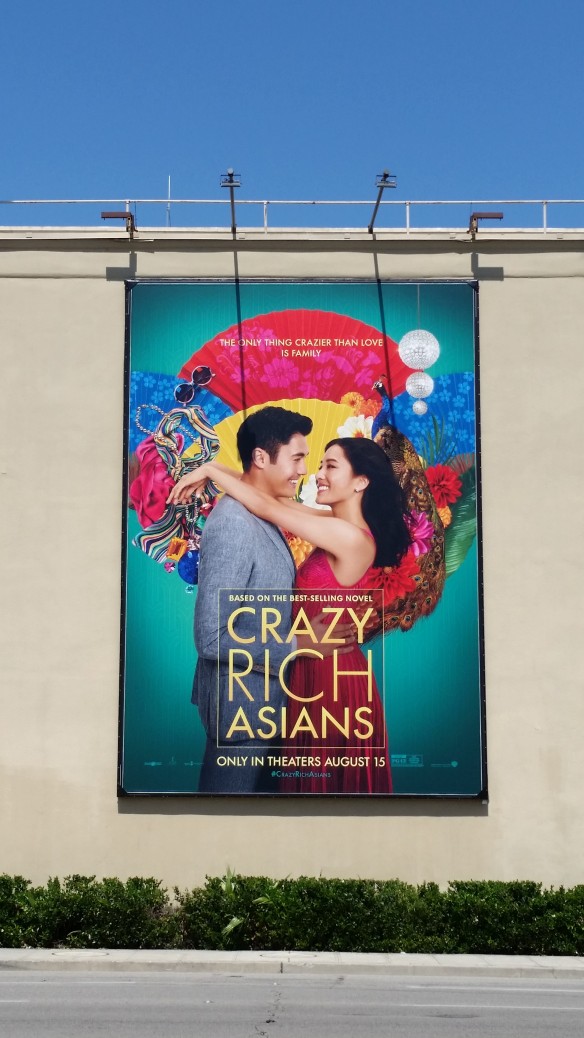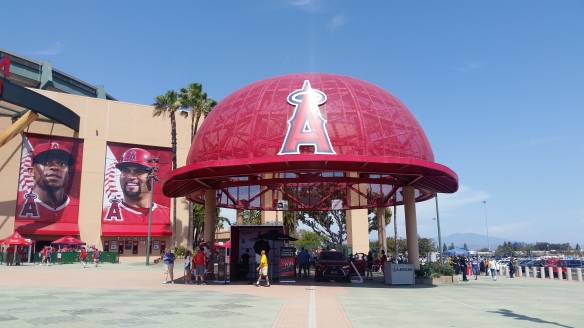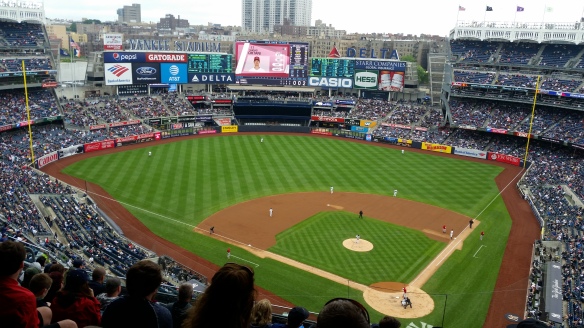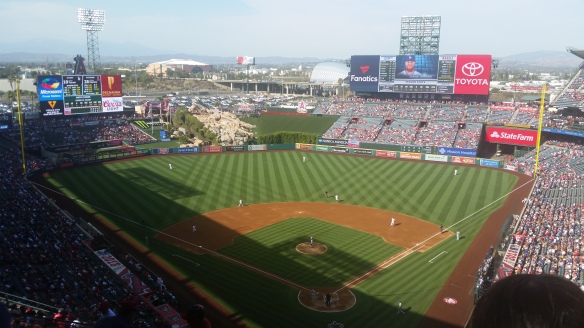
The film poster for Crazy Rich Asians displayed on the Warner Brothers Studio Lot in Burbank, California, on 4 July 2018
If there is any consolation to be found in yet another sweltering summer, it’s that we can retreat to the air conditioned comforts of Netflix at home or the movie theaters to escape the heat. America is also lucky that Netflix and the film industry have spent the past month ushering in some of the most empowering characters that the country will see this summer. No, these characters aren’t superheroes or spies or the rebooted ghosts from your past. They are two professors at New York University, the married owners of a convenience store, a photographer, and a rental car sales associate.
America, say hello to NYU economics professor Rachel Chu and NYU history professor Nicholas Young, whose Cinderella tale of romance and palace intrigue is available to you in Crazy Rich Asians, the film adaptation of Kevin Kwan’s New York Times bestseller that hit theaters today. After you screen the film, you can step into the Toronto known to convenience store owners Mr. and Mrs. Kim (Appa and Umma, respectively), their photographer daughter Janet, and rental car specialist son Jung in Kim’s Convenience, the Canadian sitcom that has been streaming on Netflix since July.
What makes the protagonists of Crazy Rich Asians and Kim’s Convenience so empowering is that they are otherwise ordinary people whose stories get to be told—they just happen to be Asian or of Asian descent, and there’s a strength in numbers in both stories. In seeing American-born Chinese (ABC) Rachel visit Asia for the first time for the wedding of Nick’s best friend, and Janet and Jung strive to forge their own paths in spite of the expectations that their parents hold for them, pop culture is reminded again that there is no monolithic experience for the Asian immigrant. It’s not just doing well in school, making a living as a professional, handling strict parents, and having a number of awkward social interactions.
The manner in which Crazy Rich Asians and Kim’s Convenience address the gray area of being an Asian-American/Asian-Canadian resonated with me the most: you can never fully occupy the sphere of being just “Asian” or just “American/Canadian”. Rachel may have Chinese blood from both sides of her family, but her upbringing in America gave her a blind spot to the customs that she encounters with Nick’s family. Although this part is not as emphasized in the film as it is in the book, Nick clashes with his mother, Eleanor, over just how much his values have changed after leaving Singapore for the United Kingdom and then the United States for education and work.
In an episode from the first season of Kim’s Convenience, Janet struggles with not being Korean enough—in speaking the language and eating the food—when she’s stuck hosting her cousin visiting from South Korea. Other times in the series, Jung and Janet have to clarify to their friends of other ethnicities the meaning of Korean pranks (ddongjeem!) and what appears to be the harsh parenting style of Appa.
But because these Asian-centered stories are told from universal starting points—falling in love and staying in love, in the case of Crazy Rich Asians; trying to fit in with family and the city community for Kim’s Convenience—a general audience will (begin to) better understand the complexity of an Asian-American/Canadian identity. There are plenty of identify crises to ride on here: How much of your heritage will you embrace? How much will you assimilate? If the family functions as the basic unit of society in Asia, how do you reconcile that with the spirit of individualism that runs in the US and Canada? Whatever you choose, the film and the sitcom celebrate this duality and impart a sense of pride in sharing both labels.
The other empowering aspect in seeing Asians portrayed as ordinary people in Crazy Rich Asians and Kim’s Convenience is the flipping of stereotypes attached to roles for Asians. The caricatures of nerdy, awkward Asian men or nubile, damsel-in-distress Asian women share a common, frustrating trait: passiveness. Crazy Rich Asians crushes that passivity with the fun, flirty romance between Rachel (Constance Wu) and Nick (Henry Golding). Audiences will see these two attractive and charismatic Asians exchange sexy glances in bed and then share in the silent, focused eye contact of love—the one where you can’t see anything else except the beloved one—at the mega wedding anchoring the film. They’ll see the couple work through problems and perform the little gestures that scream “I love you”, in the spirit of any good old romantic comedy.
This is the point where a lot of thematic similarities can be drawn between the characters of Crazy Rich Asians and Kim’s Convenience. Nick and Jung (Simu Liu) portray those Hollywood unicorns of Asian and Asian-Canadian/American men sought after for both their looks and personalities (and, fine, abs) by women of all backgrounds. Rachel, Nick’s cousin Astrid (Gemma Chan), and Janet (Andrea Bang) all show an independent streak and a willingness to fight back when they’ve been wronged by others. The final confrontation between Rachel and Eleanor is such a satisfying conclusion to their arc and underscores the different strengths that both women exhibit. The best part about seeing these well-rounded characters who look like you and act like you is that they create a swelling sense of self-belief, the confidence that comes from feeling that you matter.
Crazy Rich Asians and Kim’s Convenience are only a drop in the bucket in all of the content that’s been churned out by the entertainment industry, but a lot of Asian-American viewers who have seen the film and/or sitcom have celebrated on social media about how the characters and their stories made them feel represented for the first time. Now the hope for Crazy Rich Asians is that it becomes a critical and box office hit embraced by everyone, empowering a wider palette of people to share their stories with the world and encouraging a stubborn Hollywood to open its mind up to new voices and ideas.
The cast of Crazy Rich Asians has repeatedly said that this isn’t just a film—this is a movement. Let’s make this movement expand beyond this summer and this population of crazy rich Asians.



